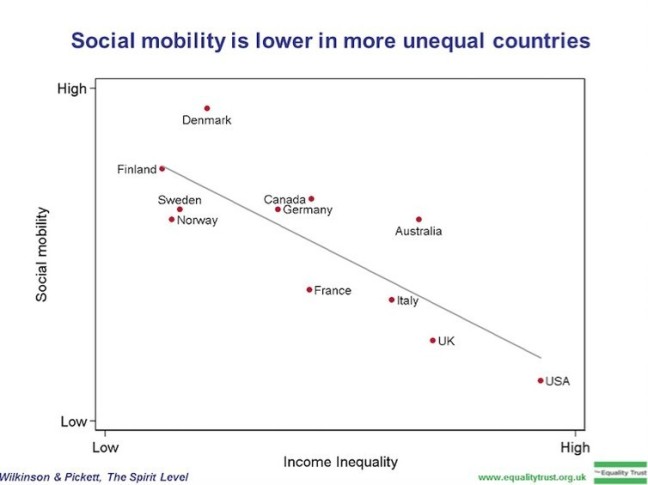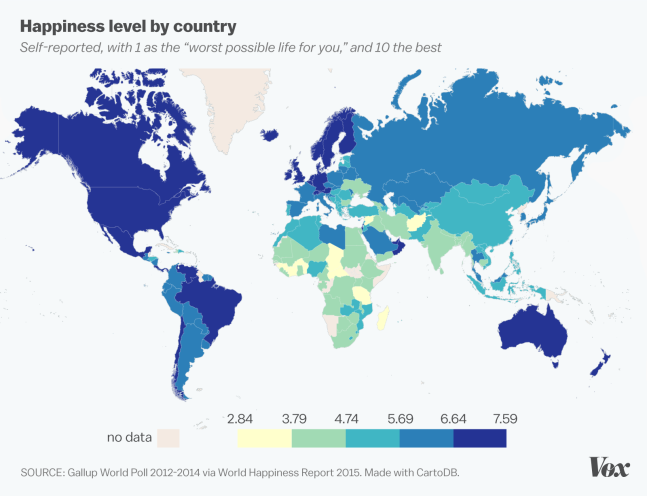
« Père, gardez-vous à droite, père, gardez-vous à gauche. »
Philippe le Hardi (Poitiers, 1356)
Ces conseils du fils au père donnés dans une situation désespérée valent-ils pour une armée triomphante, ayant conquis dans un double assaut rapide la tête du pouvoir politique ? La question mérite d’être posée, la réponse incluant et les raisons de la spectaculaire victoire et les conditions d’une action durable.
Une pensée du mouvement
Si le « et droite et gauche » constituaient une prétention œcuménique à rassembler les deux termes dans son seul mouvement, la proposition ne vaudrait guère plus qu’une incantation à portée conjoncturelle. Elle relèverait de l’illusion. Or Emmanuel Macron, en peu de mois, a déjà montré qu’il entendait incarner une transformation en profondeur du fonctionnement politique.
Lui et ses troupes de LREM occupent pleinement l’espace central de la vie politique, tenant à distance les extrêmes des deux camps qui s’époumonent à condamner ce qu’une majorité de Français, dans l’expectative bienveillante, à l’évidence ne désapprouve pas explicitement. De part et d’autre du camp présidentiel, les bribes des anciens partis de gouvernement se disputent le drapeau de leader en tentant de grignoter sur le centre et sur les extrêmes. Grand écart meurtrier, gymnastique dangereuse, qui produit une fragmentation accélérée ici et là, selon un processus incontrôlé de scissiparité.
Pour la première fois en France, le centre de gravité du champ politique s’ordonne de manière autonome, sans combinaison préalable, ni dosage, ni addition ou soustraction avec les forces des deux blocs. On avait pu connaître des gouvernements du centre : il s’agissait toujours de moments de coalition pour faire face à un péril de droite ou de gauche. Rien de tel aujourd’hui : une large majorité de Français a délibérément accepté de sortir des chemins balisés par les vieux clivages traditionnels.
Si la présence de Marine Le Pen au second tour de la présidentielle pouvait troubler la lecture, la très ample victoire des législatives ne laisse aucune place au doute. Une vaste armée venue de l’ombre a balayé une génération forgée sur les pavois des grands partis de gouvernement. On assiste là à une véritable déconnexion à la française vis-à-vis d’un dualisme qui a tant conditionné et rythmé dans ce pays les alternances gouvernantes.
Certes, Emmanuel Macron a bénéficié d’opportunes circonstances, avec au premier rang l’auto-implosion d’un système partisan discrédité. Mais la chance ne suffit pas à expliquer cette mutation spectaculaire dans l’ordre politique. La réussite actuelle de sa trajectoire ne saurait se réduire à un hasard de bonne fortune, à un prétendu vide politique qu’il aurait habilement saisi, à un rejet des extrêmes.
Ces éléments ont pu jouer, mais comme adjuvants à un besoin profond et brutal d’une majorité de Français : celui de rompre les ponts avec des acteurs politiques dont le jeu apparaissait usé, stérile et dangereux, puisqu’il ne faisait qu’amener l’extrémisme aux portes du pouvoir. La force d’Emmanuel Macron a été d’assumer cette urgence à sortir du pré carré de la vieille politique, d’accréditer qu’il n’y avait de pensée en mouvement qu’intégrée à une pensée du mouvement.
Changer de notes
C’est Corneille qui donnait déjà ce conseil politique avisé :
« Il faut considérer pour son propre intérêt,
Et le temps où l’on vit et les lieux où l’on est. »
Les responsables des partis dominants, s’abandonnant aux mirages troubles du passé, feignaient de croire que notre pays pouvait suivre un rythme indépendant mesuré par lui seul : c’était oublier, Europe à l’appui, que la France n’est plus qu’un petit secteur de la planète, et que son histoire s’écrit largement hors du cadre de l’hexagone. En total contrepoint, Emmanuel Macron a fait de la question internationale et européenne le pilier de son projet : pari audacieux dans le contexte national de repli. Mais posture fructueuse par la distance qu’elle creusait avec les candidats du système contesté. D’autant qu’elle s’appuyait sur un changement radical de méthode de campagne, et l’émergence d’un nouveau type d’acteur, « En marche ! ».
« En marche ! », le nom a pu faire couler beaucoup d’encre, parfois trempée d’ironie autour des initiales EM et de leur identification à celles du leader. Mais la chose s’est avérée d’une efficacité remarquable : sa polysémie occupait pleinement l’horizon d’attente des Français ; cela sonnait comme un défi à l’immobilisme des acteurs politiques, une affirmation de volonté d’agir, un désir de se rassembler. Refusant d’emblée l’entre-soi des partis, le nouveau mouvement se voulait ouvert, sans ostracisation de quiconque et sans exigence d’abandon.
Mais surtout, il intégrait une donnée fondamentale : l’appel de la route, le recours à l’itinérance. On cherche la finalité dans l’itinéraire emprunté, le but dans le chemin. La dialectique des fins et des moyens s’inscrit alors derrière celle des buts et du cheminement. Visiblement, « marcher » est apparu à beaucoup comme le signal pour sortir des tranchées de l’alternance et de l’impuissance.
L’affaire a d’autant mieux porté ses fruits qu’elle s’opérait dans une atmosphère propice au rejet des clivages. La menace terroriste aussi permanente que diffuse faisant suite aux terribles attentats de Paris et de Nice invite naturellement à l’union, au rassemblement. Le poids de la crise et les cortèges de chômeurs appellent au rassemblement des énergies. L’heure n’est plus aux querelles de chapelles politiques, mais à la recherche d’une énergie collective pour résister. C’est de n’avoir pas compris ce besoin d’unité que tant du côté du FN que de celui des Insoumis on doit aujourd’hui baisser l’oreille.
Open space politique
Emmanuel Macron et ses troupes de LREM, en épousant pleinement l’air du temps, ont tracé une perspective cavalière dans le champ politique. Mais cela ne suffit pas à garantir l’avenir. L’essartage auquel ils ont procédé a, certes, ouvert l’horizon. Il n’a pas pour autant supprimé le clivage droite-gauche qui affleure à la surface quand il ne jaillit pas en travers de la route. Car ce qui a explosé lors des deux dernières consultations, c’est le système des partis et leur ventilation, non leur substrat idéologique. Les vieux partis étaient malades, épuisés par leur décalage avec l’évolution politique, économique et sociale.
Avant de se forger au moule présidentiel, les partis de gauche s’étaient développés sur une base sociale de classes organisées en syndicats. Adossé à l’État-providence, le Parti socialiste s’est progressivement vidé de sa substance sociale : l’affaiblissement de son alliée privilégiée, la CFDT, la disparition de son bastion de la FEN ont accéléré son déclin. Perdue dans un manteau politique trop lâche pour elle, la social-démocratie française est devenue un grand corps malade et s’est noyée dans une sorte de conservatisme évolutif. La chute brutale de 2017 n’est donc que l’épilogue d’une longue dégénérescence.

Laurent Wauquiez, le nouveau patron de la droite, le 10 décembre à Paris, après son élection à la tête des Républicains.Jacques Demarthon/AFP
La droite a longtemps été rebelle à la structuration dans des partis solides. Elle a cependant été astreinte à une conversion partisane par le système présidentialisé de la Ve République : UNR, UDR, RPR, UMP, autant de rassemblements pour la conquête du pouvoir suprême. Mais à la différence des vieux partis de gauche, cette formule ne s’appuie pas sur une idéologie fermement déclarée. La droite met en avant le pragmatisme et l’efficacité ; elle privilégie l’agencement autour d’une forte personnalité. On devine l’effet dévastateur d’une crise de ce leadership, aggravée par l’échec patent du projet politique à résoudre les problèmes du moment et l’effrayant vide des alternances successives. La voilà réduite à pêcher en eau trouble identitaire.
UMP et PS, bateaux devenus ivres, ont tous deux démâté en pleine mer. Les partis du vieux centre, étouffés qu’ils étaient par la bipolarisation, perdent avec elle leur logique d’alliance et du même coup dérivent au gré du vent, privés qu’ils sont de môles d’amarrage. Ainsi le champ politique se voit transformé en vaste open space où errent les fantômes des anciens navires amiraux. L’heure est aux convergences éphémères, aux rencontres furtives, aux ruptures saccadées.
Certes comme la gauche, la droite reviendra à la surface. Ni l’une ni l’autre n’ont disparu, elles ont été mises de côté par l’esprit du temps. Le clivage, quel que soit le nom qu’on lui donne, s’enracine au plus profond de la mécanique sociale. Le vieux balancier de l’ordre et du mouvement, du social et de l’individuel, de l’égalité et de la liberté continue son tic-tac dans la pénombre. Et l’on ajoutera qu’il n’y a jamais eu une droite et une gauche, mais des droites et des gauches : une droite autoritaire, libérale, sociale, contre-révolutionnaire, républicaine… Une gauche patriote, internationaliste, réformiste, radicale, sociale… Bref, tout un nuancier au travers duquel les idées varient et circulent au gré des courants et des moments.
Confiance à crédit
La grande force d’Emmanuel Macron, avec En marche ! aura été de jouer sur ce nuancier pour renvoyer au second plan les antinomies traditionnelles. Rassembler, au nom de l’action, autour de mesures compatibles, des membres des deux vieux camps. Il a ainsi bénéficié, non d’un crédit de confiance, mais d’une confiance à crédit dont il devra répondre le moment venu. Avec le danger de se faire tondre les électeurs sur le dos par les bigarrures partisanes qui se seront redéveloppées sur les ruines des anciens partis.
En effet, résister à ces résurgences impose de forger un outil politique d’un genre inédit, capable de faire vivre ensemble des hommes et des femmes des deux camps sans qu’ils perdent leurs convictions singulières. L’équation est complexe, car il ne peut s’agir de recréer un parti à l’identique en ne changeant que l’étiquette : l’affaire serait sans lendemain, les Français ayant de manière spectaculaire exprimé leur rejet des vieilles formules partisanes. Il s’agit donc d’inventer quelque chose qui ne soit pas qu’un instrument de désignation des candidats ni qu’un porte-voix du gouvernement et du Président. Au-delà d’une nécessaire cohérence d’ensemble du discours et de l’action, il devra proposer une autre manière d’agir, un autre rapport à la politique
N’est-ce pas d’ailleurs ce que beaucoup croient avoir entendu dans le message d’Emmanuel Macron ? Une volonté exprimée d’activer l’autonomie, de libérer l’énergie sociale ? De faire émerger et remonter les initiatives individuelles et sociales. Les discours de campagne résonnaient comme une prise de conscience de l’insuffisance des solutions dictées d’en haut. Il y a d’ailleurs là peut-être le sésame du succès macronien. Le rejet des partis, l’apparente indifférence des Français aux politiques, n’était-ce pas essentiellement un refus de participer à un système qui les traitait en simples consommateurs d’un spectacle fabriqué par une bureaucratie coupée de la société ? Car la France s’étiole, étouffée qu’elle est par des bureaucrates qui ont pris le pouvoir des mains défaillantes des acteurs politiques. Ceux-ci, incapables de faire face à la situation, se sont déchargés de leurs responsabilités sur des hauts fonctionnaires qui n’auraient dû qu’être au service du public.
En établissant du haut en bas de l’édifice un corset étouffant, la bureaucratie moderne a miné la capacité de proposer et d’agir. Or, c’est dans la renaissance de cette inventivité que réside le seul espoir de sortir de la crise de confiance que traverse la société. Et pour LREM de s’imposer comme acteur durable.
Faisant écho aux paroles d’un chanteur populaire récemment disparu, le moment n’est-il pas venu de donner aux Français non seulement l’envie d’avoir envie, mais aussi les marges de manœuvre pour agir ?





